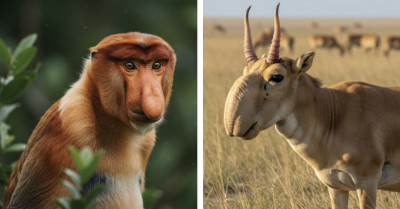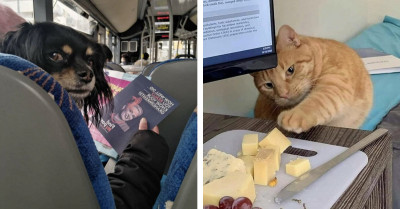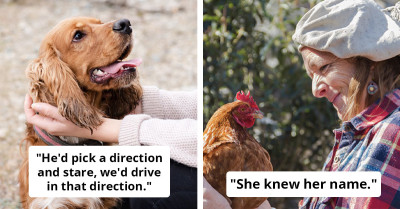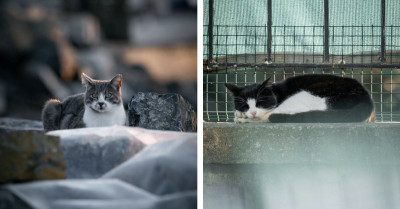Local Resident Finds Coyote In Their Backyard, Only To Put Up Lost-But-Found Post For Stray Dog
In the delightful world of social media misadventures, a recent post on the r/facepalm subreddit has been tickling the funny bones of netizens across the globe.
The tale began when a bewildered homeowner reached out to the Facebook online community for assistance. Their plea was simple: "Can whoever this dog belongs to come get it, please?"
The concerned citizen reported that a mysterious 'dog' had infiltrated their backyard. With children frightened and family dogs on high alert, the poster described the intruder as both "scary and unfriendly."
A typical neighborhood squabble? Not quite. You see, the twist was as wild as the animal in question, for the furry gatecrasher was no canine escapee but a coyote. Yes, a coyote—looking as bewildered as a cat at a dog show. Cue the collective internet facepalm!
The image accompanying the post captured the animal in a less-than-flattering nighttime snapshot. Its eyes were aglow with the flash of the camera, adding a ghostly vibe to the encounter. The comments were a delightful mix of confusion, concern, and a touch of unintentional comedy.
One neighbor immediately jumped to a Wild West solution, suggesting the coyote be dealt with in a less-than-hospitable manner—hint: it wouldn’t be alive in the end. Can’t have it gobbling up those dogs or cats now, can we?
Another observant soul cleared up the confusion by pointing out that it was, in fact, a coyote.
This person is definitely confused

"Don't let your kids outside with coyotes. They drag off small dogs and cats all the time."

Understanding Animal Behavior in Urban Environments
The incident of a coyote being mistaken for a pet dog raises important questions about human-animal interactions in urban settings. According to research on urban wildlife, urban environments significantly alter animal behavior, leading to increased encounters between humans and wildlife.
Understanding these dynamics is crucial for ensuring coexistence as urban expansion continues to encroach upon natural habitats.
You can be forgiven for mistaking a coyote for a wolf or a dog. They are closely related.

It definitely looks like a photo taken in the wild.

This mix-up also reflects the psychological concept of social categorization, where individuals often rely on visual cues to categorize animals. Studies suggest that humans have an innate tendency to classify animals based on familiarity, leading to potential misidentification.
This can have serious implications, especially in urban settings where wildlife encounters are becoming more common, and misidentifications could lead to unnecessary panic or harm to the animals involved.
"This is obviously fake. That's a trail cam picture; no one who owns a trail cam would mistake that for a dog."

Coyotes are related to dogs...but still.

The Role of Education in Human-Wildlife Interactions
Education plays a critical role in reducing human-wildlife conflicts. Community programs designed to raise awareness about local wildlife can help residents better understand the behaviors and needs of urban animals.
Such initiatives can also promote empathy towards wildlife, encouraging residents to coexist peacefully with their non-human neighbors.
If you find a coyote in your backyard, are you letting it out or shooting it?

Apparently, that's a small coyote. They do get much bigger than that.

Psychological research indicates that fostering a sense of connection to local wildlife can enhance community engagement and encourage conservation efforts. As noted by Dr. Susan David, an expert in emotional agility, "When individuals feel a connection to their environment, they are more likely to take action to protect it." This sentiment is echoed in community education programs that emphasize the value of biodiversity within urban environments, encouraging residents to appreciate and support their local ecosystems.
Who knows? It could be real or just a made-up story to get a little attention.

Even though coyotes have been living in America for thousands of years, they have been subject to a pitiless war of extermination by humans.

This innocent mistake is definitely one that would get anyone laughing. However, it's important to be vigilant and careful because even though coyotes may look like our cute dogs, they can be very dangerous.
We should also keep in mind that this might very well be a fake story just to get a little attention. As some netizens have stated, some parts of the post look a bit fishy.
As our habitats overlap, it's not just lost pets that may wander into our lives but also the native locals of the land.
So, next time you spot a 'strange dog' in your yard, take a moment before you post. It might just be one of nature's wanderers and not a stray pet.
According to this user, as long as the animal poses a danger to people and pets, it should be put down.

"We do have a right to kill it if it's a danger to us."

Practical Steps for Urban Residents
To navigate the complexities of urban wildlife interactions, residents can take proactive steps to educate themselves about local species and their behaviors. Engaging in local wildlife workshops or attending informational sessions can provide valuable insights into living harmoniously alongside wildlife.
Additionally, residents should be encouraged to report sightings to local wildlife organizations, which can help track urban animal populations and inform conservation strategies.
Psychological Analysis
This incident reflects common misunderstandings about wildlife in urban environments. People often misidentify animals based on appearance or behavior, which can lead to confusion and unnecessary fear. It's important for communities to educate themselves about local wildlife to foster coexistence and reduce conflicts.
Analysis generated by AI
Analysis & Alternative Approaches
In conclusion, the humorous case of misidentifying a coyote as a pet dog highlights the complexities of urban wildlife interactions. By increasing awareness and understanding of local wildlife, communities can foster a more harmonious coexistence.
Education and proactive engagement are key to ensuring that both residents and wildlife can thrive in urban settings.



